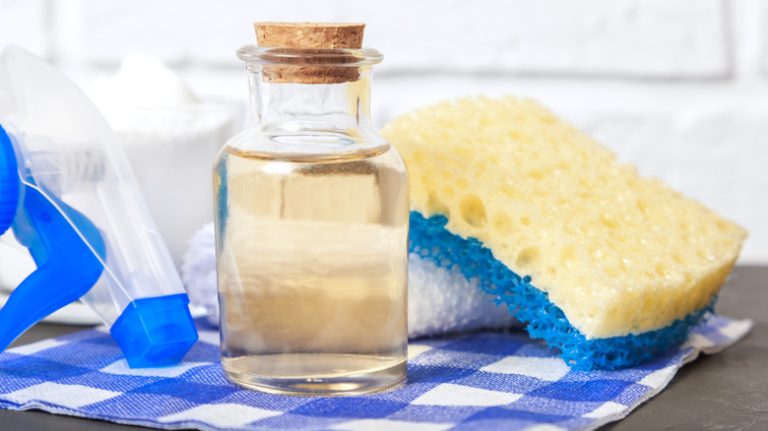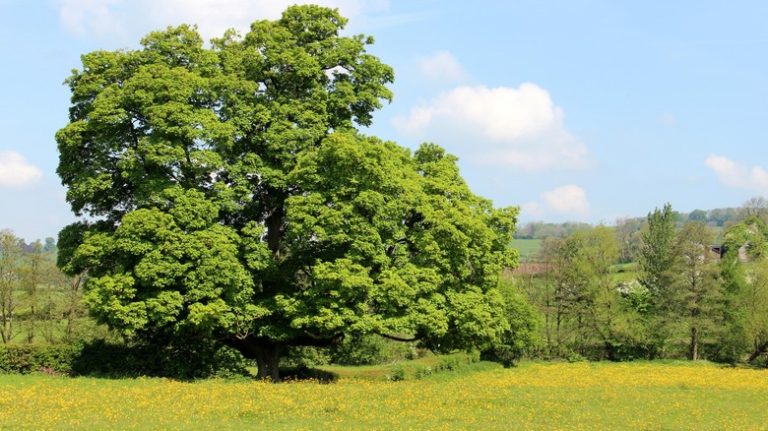The cherry laurel, or laurocerasus, is a popular evergreen shrub that is commonly used in landscaping. Its history can be traced back to ancient times, where it was used for various purposes. The cherry laurel is known for its dense foliage and ability to grow in a wide range of climates.
In the springtime, the cherry laurel produces small white flowers that are loved by insects. These flowers then develop into tiny fruits that are similar to cherries. While the fruits are not typically used for consumption, they add to the beauty of the shrub.
When it comes to managing a cherry laurel, pruning is a key aspect. Whether you’re trimming dead spots or shaping the shrub, it’s important to do so carefully. The cherry laurel can be pruned in any season, but it is best to do so in late winter or early spring.
To prune a cherry laurel, first, make sure you have the right tools, such as gloves and shears. Then, remove any dead or diseased branches, making clean cuts just above a bud or branch junction. If you’re looking to trim a large shrub, consider leaving a few branches untouched to maintain its natural shape.
If you’re looking to propagate a cherry laurel, you can do so through various methods. One common method is through cuttings. Simply take a 4-6 inch cutting from a healthy branch and plant it in a pot with moist soil. Keep the cutting moist and monitor its growth until it roots.
Whether you’re planting a new cherry laurel or transplanting an existing one, it’s important to consider its needs. The cherry laurel prefers a full sun to partial shade exposure and well-drained soil. When backfilling the hole, make sure to water the shrub thoroughly to ensure proper establishment.
In conclusion, the cherry laurel is a versatile and beautiful shrub that can enhance any garden or landscape. By properly managing its growth and keeping an eye out for any signs of disease or pests, you can enjoy its stunning foliage and delicate flowers for years to come.
Prunus laurocerasus
The Prunus laurocerasus, also known as the Cherry Laurel, is a select plant that can be of great help in various situations. It is a hardy evergreen shrub that can be kept as a specimen plant or used as a hedge.
The Cherry Laurel was introduced to gardens in the 16th century when it was first planted by the Flemish botanist Carolus Clusius. Due to its ability to thrive in various environments, it has become a popular choice for many gardeners.
One should be aware that all parts of the Prunus laurocerasus are toxic due to the presence of cyanide compounds. So, for those who have children or pets, it might not be the best choice. However, it is a fantastic flowering plant that can give any garden a beautiful and vibrant look.
When planting a Cherry Laurel, it is important to choose the right location. It prefers well-drained soil, so adding sand to the ground prior to planting can help improve drainage. It also thrives in full sun to partial shade exposure.
It is recommended to dig deep holes for each plant, ensuring that they are properly spaced apart. This helps prevent the spread of diseases as well as allows each plant to grow and develop properly.
There are various sorts of diseases and problems that can affect the Prunus laurocerasus. Some common issues include brown spots on leaves and root rot. It is crucial to carefully monitor the plant and take appropriate measures whenever necessary.
Pruning the Cherry Laurel is an important aspect of its care. It is best to prune it in early spring after it has finished flowering. This helps maintain its shape and promotes healthy growth.
The Prunus laurocerasus belongs to the family Rosaceae, and its name has an interesting meaning. “Prunus” comes from the Latin word for plum, while “laurocerasus” is derived from the Latin words for laurel and cherry. This reflects how the plant’s leaves resemble those of a cherry tree and also have a fragrance similar to laurel.
Here’s a guide for planting the Prunus laurocerasus:
- Choose a suitable location with well-drained soil and proper sun exposure.
- Dig deep holes and space the plants apart.
- Take care of any diseased spots or issues that may arise.
- Prune the plant after flowering to maintain its shape.
- Water the plant regularly, especially during dry spells.
- Frost can be a problem, so protect the plant during cold periods.
The Prunus laurocerasus is a hardy and versatile plant that can be a beautiful addition to any garden. Whether for its fantastic blooms or marbled foliage, it is a plant that is often used and loved by many.
cherry laurel
The cherry laurel, also known as Prunus laurocerasus, is a type of shrub that belongs to the Rosaceae family. It is a versatile plant that can be grown in a wide range of conditions.
Cherry laurel is known for its dense and glossy foliage, making it an excellent choice for creating privacy hedges or ornamental borders. It can grow up to 15 feet tall and 15 feet wide, depending on the variety. Some popular varieties of cherry laurel include the Schipkaensis and the Otto Luyken.
When selecting a spot to plant cherry laurel, consider its sun exposure and watering needs. It thrives best in partial shade to full sun and requires well-drained soil. The plant is moderately drought-tolerant once established but benefits from regular watering, especially during dry spells.
Cherry laurel is generally low-maintenance, but it is prone to a few diseases and problems. One common issue is leaf spot, which appears as small brown spots on the leaves. To prevent this, ensure good air circulation around the shrubs and avoid over-watering and over-fertilizing. Frost can also damage the leaves, so it’s best to prune any affected branches in early springtime.
If you’re looking to propagate cherry laurel, you can do so through seeds or cuttings. Seeds can be collected from the fruit, but keep in mind that they may not produce plants with the same characteristics as the parent. Cuttings, on the other hand, should be taken in late spring or early summer and rooted in a well-draining rooting medium.
Cherry laurel has various uses in landscaping, from privacy hedges and borders to accent plants or foundation plantings. It can also be grown as an almond substitute, as the seeds contain a similar flavor. However, be cautious if you have pets, as the leaves and seeds of cherry laurel are toxic if ingested.
In terms of maintenance, cherry laurel benefits from an annual pruning to maintain its shape and size. The best time to trim is after the flowering period, as this encourages new growth. It’s important to remove any dead or diseased branches, as well as thin out the shrub to improve air circulation.
If you’re considering buying cherry laurel, it’s important to know where to look. You can find it at nurseries, garden centers, or online. Make sure to check your USDA hardiness zone to ensure the plant is suitable for your climate.
In conclusion, cherry laurel is a versatile shrub that can thrive in various conditions. Whether you’re looking for a privacy hedge, an accent plant, or an almond substitute, cherry laurel is worth considering. With some effort and proper care, it can add beauty and functionality to your landscape.
For more information on cherry laurel cultivation and its specific varieties, please consult your local extension office or a reliable gardening source.
How to Grow and Care for Cherry Laurel
Cherry laurel, also known by its scientific name Laurocerasus, is a member of the Rosaceae family. This evergreen shrub is popular among gardeners for its beautiful flowering and dense, green foliage. In this guide, we will go over the basics of growing and caring for cherry laurel to help you have a thriving plant in your landscape.
Choosing a Suitable Spot: Cherry laurel is a hardy plant that can tolerate a wide range of soil conditions. However, it thrives in well-draining, fertile soils. Select a spot in your garden that receives full sun to part shade, as cherry laurel benefits from a good amount of sunlight for optimal growth and flowering.
Planting: When planting cherry laurel, it is best to do so in early spring or fall. Prepare the soil by removing any weeds or grass from the planting area and amend it with organic matter to improve its fertility. Dig a hole that is twice the width of the root ball and place the seedling in the hole, making sure the top of the root ball is level with or slightly above the soil surface. Backfill the hole with soil, firming it gently around the roots, and water well.
Pruning and Trimming: Cherry laurel can grow tall and wide if left unpruned, so prune it to maintain a more compact, manageable shape. You can prune cherry laurel at any time during the growing season, but it is best to do so in late winter or early spring before new growth emerges. Use sharp, clean pruning shears to remove any dead or diseased branches and to shape the plant as desired.
Watering: Cherry laurel has average water needs and should be watered regularly, especially during dry spells. The soil should be kept evenly moist but not overly saturated. Avoid overwatering, as this can lead to root rot and other moisture-related issues.
Fertilizing: To keep your cherry laurel healthy and promote optimal growth and flowering, consider fertilizing it annually. Use a balanced, slow-release fertilizer according to the instructions provided by the manufacturer. Apply the fertilizer in early spring, prior to new growth, and water well to help it penetrate the soil.
Pest and Disease Management: Cherry laurel is generally hardy and not prone to serious pest or disease issues. However, keep an eye out for any signs of common pests, such as aphids or scale insects, and treat them accordingly. Additionally, maintaining proper air circulation around the plant and avoiding excessive moisture can help prevent fungal diseases.
Managing Suckers: Cherry laurel may produce suckers, which are shoots that grow from the base of the plant. To keep the plant looking neat and prevent it from spreading beyond bounds, remove any suckers as they appear.
Conclusion: Cherry laurel is a beautiful evergreen shrub that can add vibrant color and dense foliage to your landscape. By following this guide and providing it with the right growing conditions, you can enjoy the beauty of cherry laurel in your garden for years to come.




